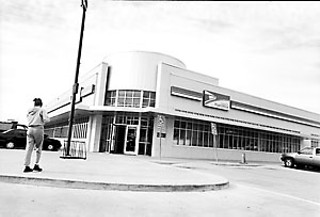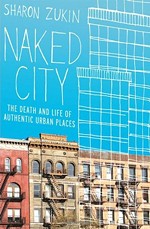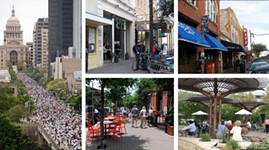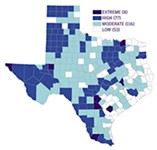Developing Stories
Two downtown projects uneasily launched
By Katherine Gregor, Fri., Oct. 13, 2006

Personalized Downtown Postage Stamp
Surprise, surprise. The U.S. Postal Service announced last week that it has selected the team of local developer Andrews Urban LLC and its Atlanta-based partner Novare Group to "assist in the development" of a new Downtown post office. A preliminary planning agreement sets the stage for final development negotiations.
The selection was hardly a shock, given the fact that Mayor Will Wynn had traveled to Washington in May to advocate at USPS headquarters for a specific redevelopment concept brought to him by Novare and Andrews. Wynn has long championed the need for a better-designed Downtown post office and a better, denser use for USPS's prime block Downtown. Novare Group/Andrews Urban – having fortuitously tied up the block directly west of the USPS property – proposed to Wynn and then to USPS a two-step solution: Build a new post office on its adjacent site, move postal operations over (ensuring continuity of service), and then redevelop the current USPS property as a mixed-use high-rise.
At least one Austin developer complained that no one else really had a fair shot at the job, given Novare/Andrews' strong inside track. USPS went through the exercise of a "competitive" request for proposal process, but the RFP was written specifically to the Novare concept – requiring that if the post office were to be moved, it had to be "within a one block radius of the existing site." Only Novare had dibs on an available property fitting that description. USPS representatives have refused Chronicle requests to disclose the names of the other five teams that competed for the project (standard protocol on most public-sector jobs) – creating the appearance that USPS would prefer to avoid public scrutiny of its selection process.
But developer Larry Warshaw (Spring Condominiums), who has watched the project closely, characterized resentment by other developers as sour grapes. He observed of Novare: "They have enormous credibility and experience with high-rise residential projects and, even more importantly in a project like this, they have enormous financial strength." The team's other Downtown Austin projects are the 360 Condominiums – a 580-foot tower that broke ground in June – and the expansion of the Austin Music Hall.
Mayor Wynn is unapologetic about his advocacy of the winning team's plan. (He was, however, careful to note that the RFP language and selection process were wholly in the hands of USPS.) Wynn said he'd spent years trying to interest Austin developers in "fixing the mistake" of the Downtown post office – and Novare/Andrews was the first and only developer to proactively bring him a workable plan. "We live in a meritocracy," said Wynn, "and they just came up with a great solution." Added the mayor: "If any developers don't have enough projects Downtown, tell them to come talk to me – I have some ideas for them."
When in ROMA ...
More in the no-surprises department: ROMA Design Group was selected by City Council last Thursday to execute the city's new Downtown Master Plan. When it comes to urban planning, San Francisco-based ROMA and Austin are becoming quite the cozy couple; this makes the seventh major COA project that has gone to ROMA.
On this job as well, the fairness of the selection process – this time the city's – was called into question. Certainly it was awkward. After issuing a request for qualifications and receiving submittals from eight teams (seven met Minority Business Enterprise requirements), the city staff decided, after the fact, that it needed to disqualify all contenders who own property Downtown. Since that eliminated all but two submitting teams, the city threw out its own process and reissued the RFQ – this time with a new requirement that no team member could own more than $5,000 in Downtown property.
At best, the city's failure to anticipate the conflict-of-interest issue was a professional discourtesy to the proposers, who typically invest $15,000 to $20,000 preparing a submittal. At worst, the new requirement targeted architect-developer Sinclair Black – who owns Downtown property and whose frank critiques of bureaucrats have made him unpopular with some at the city. Black was the only prime eliminated by the new rule; he has considered filing suit against the city. He points out that on other city projects, disclosure – not disqualification – has always been the rule regarding property ownership. So why the sudden change in rules for this one project?
"It's a legitimate question," said Assistant City Manager Laura Huffman, who got the awkward job of calling the primes to apologize and encourage them to resubmit. (All but the disqualified Black did – after finding new, unconflicted subconsultants.) Only after reviewing the standard conflict-of-interest forms submitted in round one, said Huffman, did city staff realize how many of the team members owned Downtown property.
Huffman explained that the team executing the 20-year Downtown Master Plan will have unusual power to make recommendations – such as zoning changes – that directly impact the valuations of specific properties. (City planner Michael Knox has said council wants the new master plan to recommend specific zoning changes and codify a standard variance process that can be adopted as code.) Said Huffman: "The city made an excellent determination that we want the downtown planning process to be as clean as possible."
In the end, San Francisco-based ROMA was the safe choice. With its focus on revitalizing urban infill sites, creating liveable communities, and designing lively public places, ROMA is nicely in synch with the urban-planning sentiments blowing through the Wynn-McCracken city hall. Prior projects that have gone to ROMA include the Pfluger Bridge Extension, 2nd Street Retail District, Seaholm District, Saltillo District Development Plan, south-shore development standards for the Town Lake Corridor, and the Mueller Airport redevelopment.
Given the city's tight budget, the fact that ROMA is a known entity and requires no learning curve on Austin issues – untrue of the other semifinalist, EDAW – undoubtedly helped the firm clinch the job. (Although the budget has been upped from $400,000 to $600,000, another architect who submitted said that the level of detail council desires equates to at least $1 million in services.)
No doubt ROMA will do a good job. But for a "clean" process, this one has started out messier than necessary.
Got something to say on the subject? Send a letter to the editor.












